The Nintendo 64, a hallmark of 90s gaming culture, is revered not just for its iconic games but also for the innovative peripherals that accompanied it. While most gamers are familiar with the standard controller and perhaps the Rumble Pak, there’s a treasure trove of lesser-known accessories that added depth and variety to the gaming experience. This article delves into these obscure gadgets, shedding light on their functionality and the unique gaming experiences they offered.
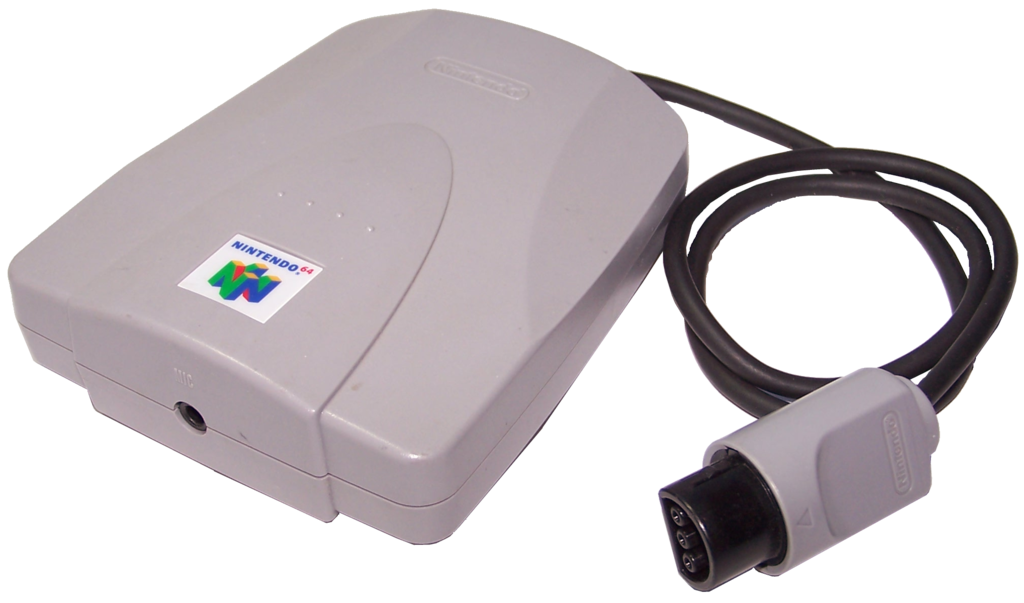
The Voice Recognition Unit (VRU)
The Voice Recognition Unit (VRU), a groundbreaking peripheral for the Nintendo 64, marked an ambitious attempt by Nintendo to integrate voice control technology into the gaming experience. Released alongside the game “Hey You, Pikachu!” in Japan and North America, the VRU allowed players to directly interact with Pikachu through voice commands, a feature that was both innovative and ahead of its time. This device captured the imagination of gamers by offering a new level of interaction that went beyond traditional button-pressing gameplay.
The VRU consisted of a microphone that plugged into one of the N64 controller ports, along with a special game cartridge that was designed to process voice commands. The technology behind the VRU was sophisticated for its era, capable of recognizing a limited vocabulary of words and phrases in real time. Players could issue commands to Pikachu, such as asking it to fetch items, perform tasks, or just engage in simple conversation. This interaction wasn’t just novel; it fostered a sense of companionship and connection with the digital character, making “Hey You, Pikachu!” a memorable experience for those who played it.
However, the VRU’s implementation was not without challenges. The technology’s sensitivity to background noise and its need for clear enunciation meant that it didn’t always accurately recognize commands, leading to moments of frustration. Despite these hurdles, the VRU was a significant step forward in exploring voice interaction in gaming, demonstrating Nintendo’s willingness to experiment with new forms of player engagement.
The peripheral’s legacy extends beyond its immediate functionality. The VRU set the stage for future voice recognition technologies in gaming, influencing the development of modern voice-controlled interfaces and assistants in consoles and games. It highlighted the potential for voice commands to add a layer of immersion and interactivity to gaming, a concept that has been refined and expanded upon in the years since.
The VRU’s significance lies not just in its technological achievements but also in its contribution to the evolution of interactive gaming. By daring to explore voice interaction, Nintendo opened up new possibilities for game design and player engagement. The VRU remains a fascinating example of the innovative spirit that characterized the Nintendo 64 era, underscoring the console’s role in pushing the boundaries of what was possible in video gaming.
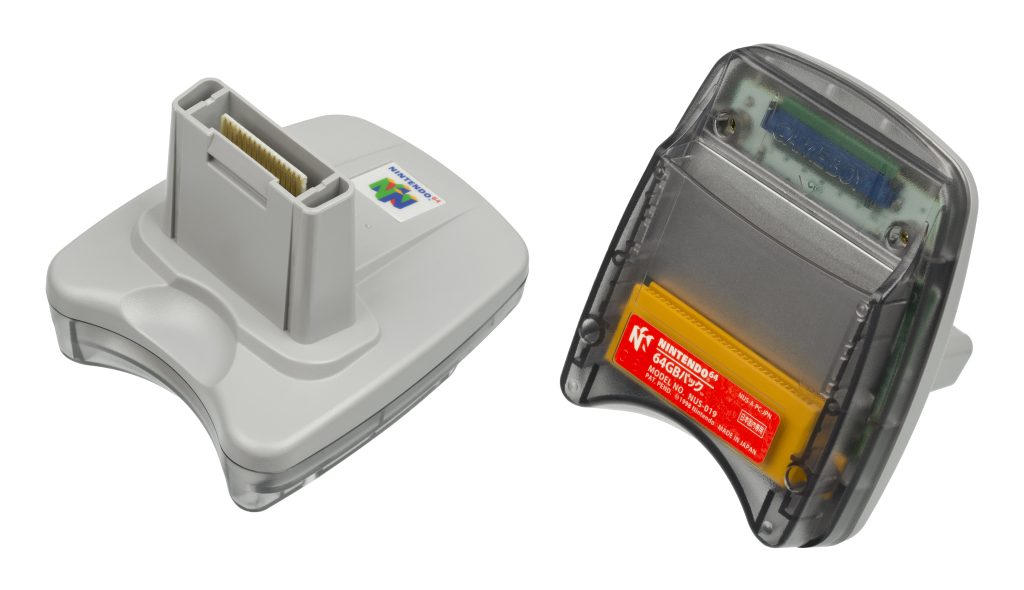
The Transfer Pak
The Transfer Pak, a distinctive peripheral for the Nintendo 64, served as a pioneering bridge between handheld and console gaming, specifically facilitating interaction between Game Boy and Nintendo 64 titles. This accessory slotted into the back of the N64 controller and accepted Game Boy cartridges, enabling a level of cross-platform integration that was revolutionary at the time. The most celebrated application of this technology was in “Pokémon Stadium,” where players could import their Pokémon from the Game Boy versions of “Pokémon Red,” “Blue,” “Yellow,” and later “Gold” and “Silver,” into the N64 game for 3D battles. This feature not only enhanced the depth of “Pokémon Stadium” but also added value to the Game Boy titles, encouraging players to engage with their Pokémon in an entirely new dimension.
Beyond Pokémon, the Transfer Pak had other uses, though less known, they showcased the potential for innovative gameplay experiences. Games like “Mario Golf” and “Mario Tennis” allowed players to transfer characters between the console and handheld versions, maintaining progress and stats across both platforms. This seamless integration of handheld and console gaming underscored Nintendo’s forward-thinking approach to game development and player engagement.
The Transfer Pak’s legacy is its demonstration of the potential for cross-platform connectivity, a concept that has become increasingly prevalent in today’s gaming ecosystem. Its ability to unite different gaming devices under a single experience foreshadowed the future of gaming, where cloud saves and cross-play have become standard. The Transfer Pak stands as a testament to Nintendo’s commitment to innovation and its influence on the evolution of gaming technology.
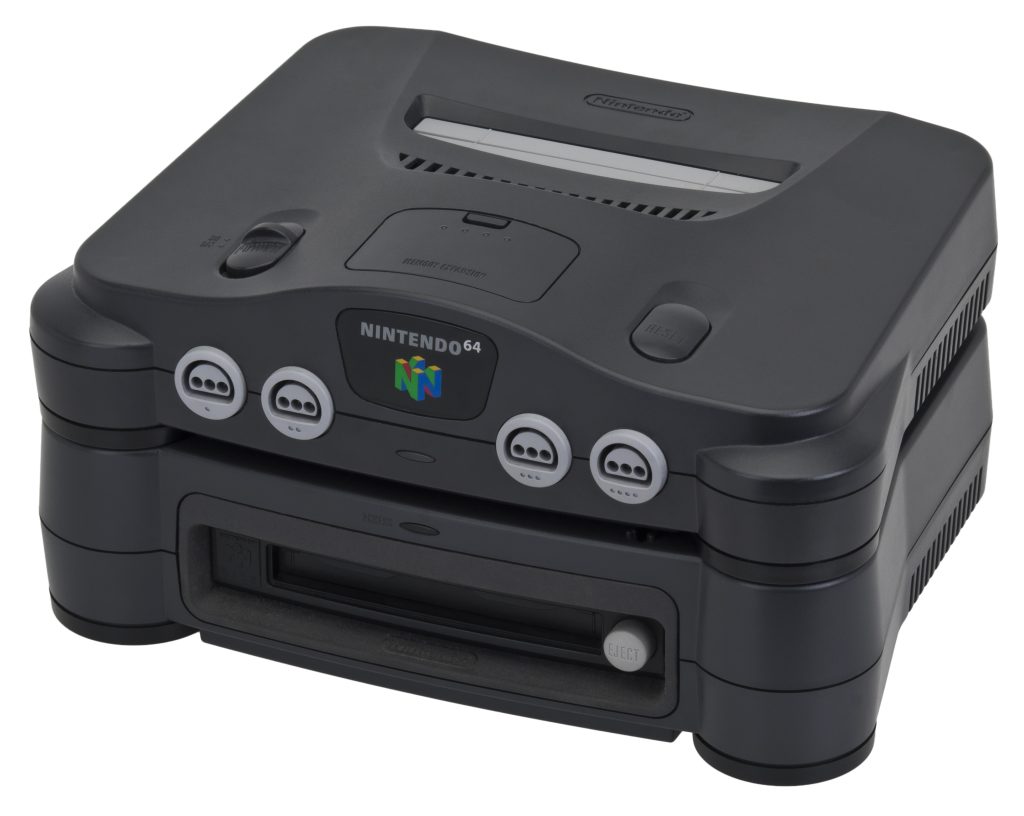
Image By Evan-Amos – Own work, CC BY-SA 3.0, https://commons.wikimedia.org/w/index.php?curid=18233907
The 64DD: A Creative Platform
The 64DD, short for 64 Disk Drive, was one of Nintendo’s most ambitious peripherals, aimed at transforming the Nintendo 64 from a traditional gaming console into a comprehensive creative platform. Released exclusively in Japan in late 1999, the 64DD attached to the bottom of the N64, equipping it with a magnetic disk drive that allowed for enhanced data storage capabilities, real-time clock for time-based events, and Internet connectivity through the Randnet service. This expansion was designed not just to extend the functionality of existing games but to introduce a new paradigm of interactive entertainment.
The 64DD’s disk-based media offered significantly larger storage capacity compared to the N64’s cartridge system, enabling more complex games with richer graphics, deeper narratives, and dynamic worlds. It also facilitated the creation and sharing of content by users, a feature that was pioneering at the time. One of the most notable titles for the 64DD was “Mario Artist,” a suite of creative tools that allowed players to draw, animate, and create 3D models. Users could even capture video and images via an optional Capture Cassette, editing and incorporating them into their digital creations.
In addition to “Mario Artist,” the 64DD hosted a variety of other innovative titles and applications. These included “SimCity 64,” a more immersive and detailed version of the popular city-building game, and “F-Zero X Expansion Kit,” which added new tracks, vehicles, and a track editor to the original N64 game. The Randnet service further extended the 64DD’s capabilities, offering online gaming, a digital magazine, and a platform for exchanging messages and content created with “Mario Artist.”
Despite its innovative features, the 64DD faced several challenges, including limited software support and the rapid advancement of gaming technology, which ultimately led to its commercial failure. However, its legacy is significant, as it represented an early attempt at integrating online capabilities and user-generated content into console gaming. The 64DD’s ambition laid the groundwork for future developments in gaming, such as downloadable content, online communities, and the emphasis on creativity and sharing in games. Its vision of a connected, creative gaming platform presaged many of the features and trends that are prevalent in the gaming industry today.
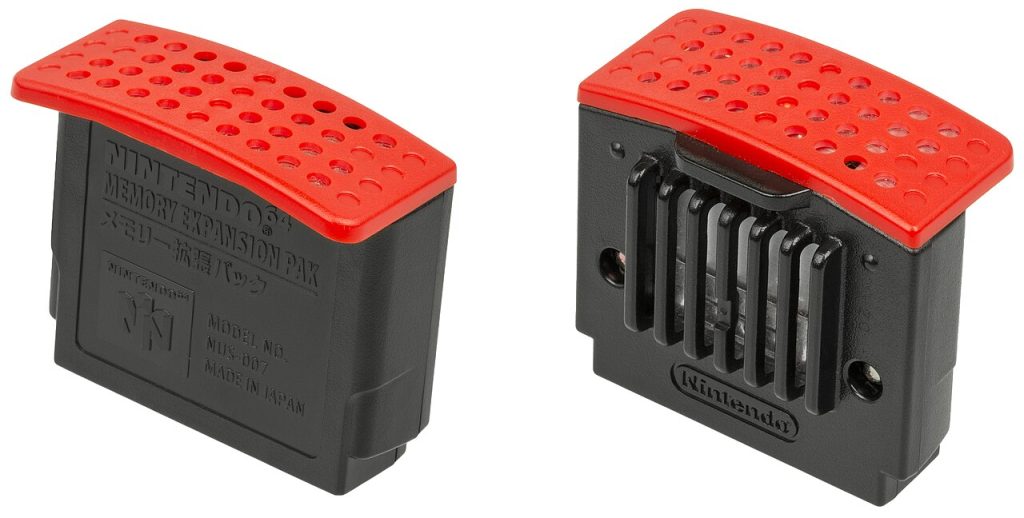
The Expansion Pak
The Expansion Pak for the Nintendo 64 represented a significant leap forward in the console’s capabilities, offering a simple yet profound upgrade that enhanced the graphical and computational potential of the system. By increasing the N64’s RAM from 4MB to 8MB, this peripheral allowed for higher resolution textures, more complex geometries, and longer draw distances in games, thereby dramatically improving the visual fidelity and overall performance of the titles that supported it.
This upgrade was not just a technical enhancement; it was a necessity for some of the most ambitious games on the platform. “The Legend of Zelda: Majora’s Mask” and “Donkey Kong 64” required the Expansion Pak to run, utilizing the additional memory for their intricate worlds and sophisticated graphics. Furthermore, games like “Perfect Dark” offered enhanced multiplayer modes and improved visuals with the Expansion Pak, setting a new standard for console gaming experiences.
The introduction of the Expansion Pak underscored Nintendo’s commitment to providing gamers with cutting-edge technology and gameplay experiences. It also highlighted the company’s foresight in designing a console that could be upgraded post-launch, extending the life and capabilities of the N64. The impact of the Expansion Pak went beyond just the technical; it pushed developers to innovate and fully exploit the hardware’s potential, leading to some of the most memorable gaming experiences of the era. This approach to hardware upgrades through peripherals like the Expansion Pak has influenced the design and functionality of future gaming systems, showcasing the value of expandable and upgradable console hardware.
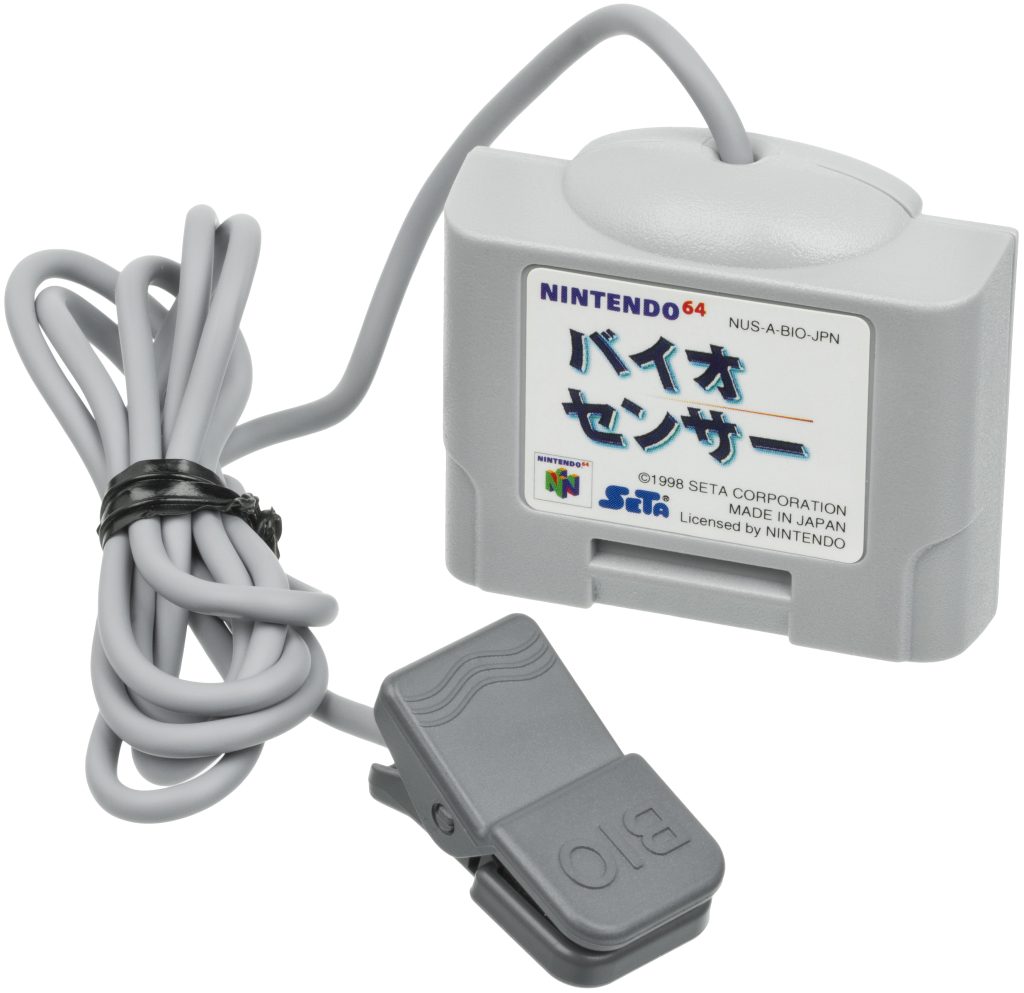
Rare and Regional Peripherals
The landscape of Nintendo 64 peripherals is dotted with numerous rare and region-specific accessories, each contributing uniquely to the console’s rich history. These peripherals, many of which were released exclusively in Japan, showcase Nintendo’s willingness to experiment and push the boundaries of conventional gaming. Among these, the Randnet Disk stands out as a particularly innovative offering, providing N64 users with online capabilities such as web browsing, email, and online gaming—ahead of its time for home consoles.
Another fascinating, Japan-exclusive peripheral was the Bio Sensor. Paired with “Tetris 64,” this device clipped onto a player’s earlobe and monitored their heart rate to dynamically adjust the game’s difficulty level. This early attempt at biometric feedback in gaming highlighted Nintendo’s interest in creating immersive and personalized gaming experiences. The Bio Sensor’s concept of integrating physical health metrics into gameplay has echoes in today’s fitness and wellness-oriented games.
Additionally, the N64 saw the release of the Jumper Pak, a stopgap memory module that came pre-installed in the console’s memory expansion port. While not as glamorous as other peripherals, its necessity for the console’s operation before the release of the Expansion Pak makes it a unique aspect of the N64’s hardware landscape.
The N64’s foray into peripheral-driven innovation didn’t stop at functionality. Aesthetic customization was also a part of the experience, with various limited-edition controllers and console colors released around the world. These not only added a personal touch to the gaming setup but also became coveted items for collectors.
These rare and regional peripherals underscore the N64’s role as a platform for experimentation. While not all were commercially successful or widely adopted, they contributed to the legacy of the Nintendo 64 as a console that ventured beyond the conventional gaming experience. The creativity and innovation behind these accessories continue to inspire the gaming industry, highlighting the potential of hardware to enhance and transform how we play.
